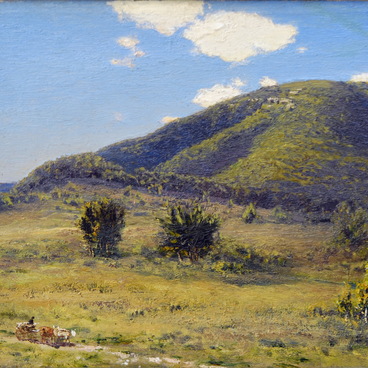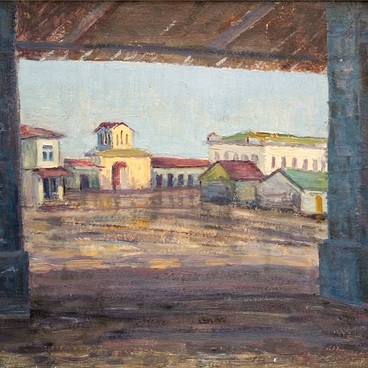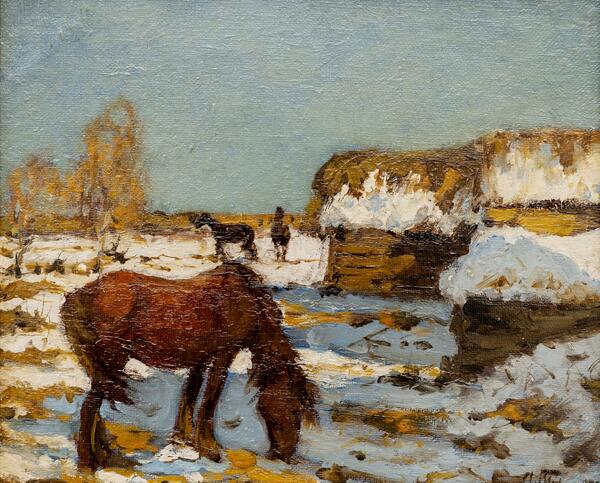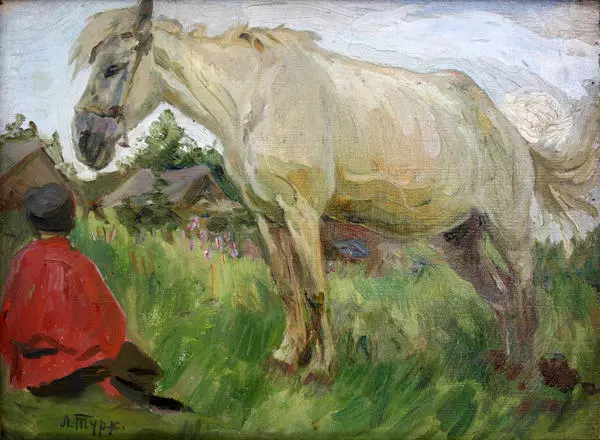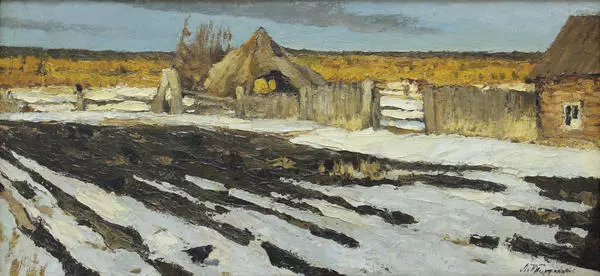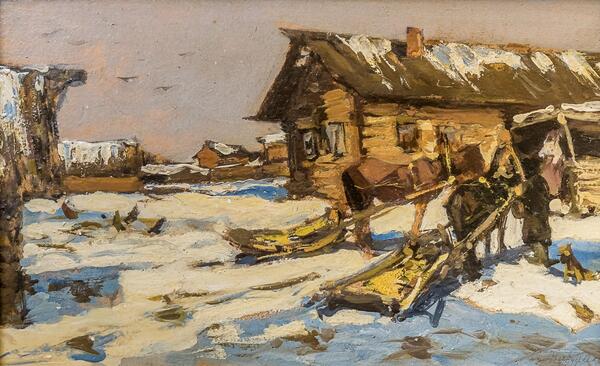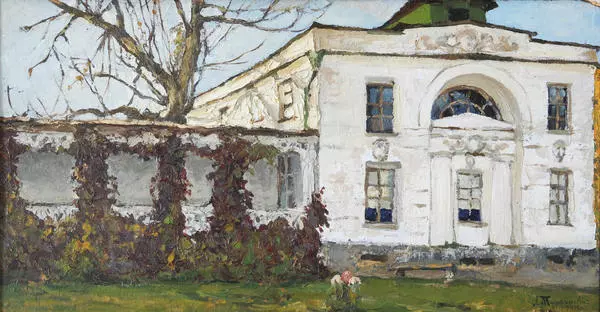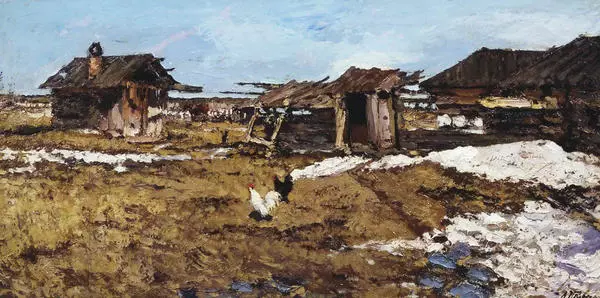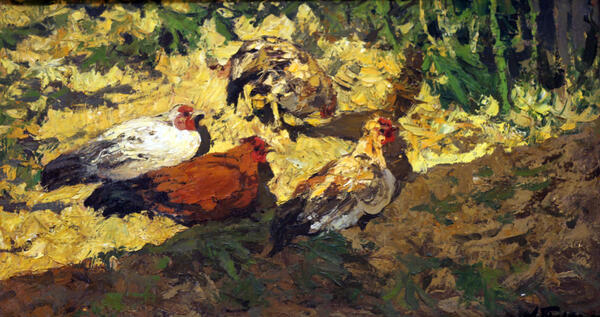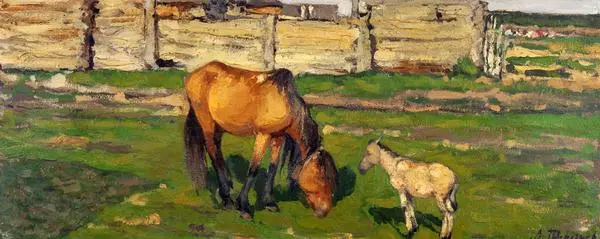The Stavropol Museum of Fine Arts holds a collection of five works by Russian impressionist painter Leonard Turzhansky. This Rural Landscape was given over to the newly organized museum by private Moscow collector Grygory Belyakov.
Leonard Turzhansky was born in 1875 in Yekaterinburg. He took private painting lessons from a professional artist Nicolay Plyusnin and studied art at the Central School of Technical Drawing in Saint Petersburg and Moscow Art School under famous artists Valentin Serov and Konstantin Korovin. Over his artistic career, Turzhansky worked in various genres and types of painting – his painted portraits and worked at an icon painting. His works include monumental painting and theatrical scene designs. Later he focused on landscapes and plain-air painting.
As one of the most significant representatives of the Moscow School of Painting Turzhansky used thick impasto brushstrokes and deep colors. His color palette is predominantly warm, solid golden-ochre, and brown. He preferred earth colors.
The Rural Landscape is a plain-air sketch made by the artist from nature in the open air. The foreground and most of the canvas space is given to a textured water-soaked earth of brownish black color with patches of dingy snow beginning to melt. The artists put a crow in the bottom left-hand corner of the picture. A portion of a ramshackle village hut and wooden fence blackened by old age and rains, and a haystack are placed directly in front of the viewer stretching to the right of the picture. The composition is simple and the color palette represents a range of earth colors rather than color versatility.
Turzhansky frequently included animal and genre motifs in his landscapes. The theme of Russian countryside held special attraction to the artist. His lyrical landscapes of the northern region and Ural Mountains introduced a new image to the Russian art and added a new aspect to the already well-developed theme of rural provinces focused primarily on midland Russia. Turzhansky’s sketches from nature went beyond the limits of a mere sketch and grew into the works of art in their own right filled with profound images and content.
Leonard Turzhansky was born in 1875 in Yekaterinburg. He took private painting lessons from a professional artist Nicolay Plyusnin and studied art at the Central School of Technical Drawing in Saint Petersburg and Moscow Art School under famous artists Valentin Serov and Konstantin Korovin. Over his artistic career, Turzhansky worked in various genres and types of painting – his painted portraits and worked at an icon painting. His works include monumental painting and theatrical scene designs. Later he focused on landscapes and plain-air painting.
As one of the most significant representatives of the Moscow School of Painting Turzhansky used thick impasto brushstrokes and deep colors. His color palette is predominantly warm, solid golden-ochre, and brown. He preferred earth colors.
The Rural Landscape is a plain-air sketch made by the artist from nature in the open air. The foreground and most of the canvas space is given to a textured water-soaked earth of brownish black color with patches of dingy snow beginning to melt. The artists put a crow in the bottom left-hand corner of the picture. A portion of a ramshackle village hut and wooden fence blackened by old age and rains, and a haystack are placed directly in front of the viewer stretching to the right of the picture. The composition is simple and the color palette represents a range of earth colors rather than color versatility.
Turzhansky frequently included animal and genre motifs in his landscapes. The theme of Russian countryside held special attraction to the artist. His lyrical landscapes of the northern region and Ural Mountains introduced a new image to the Russian art and added a new aspect to the already well-developed theme of rural provinces focused primarily on midland Russia. Turzhansky’s sketches from nature went beyond the limits of a mere sketch and grew into the works of art in their own right filled with profound images and content.
